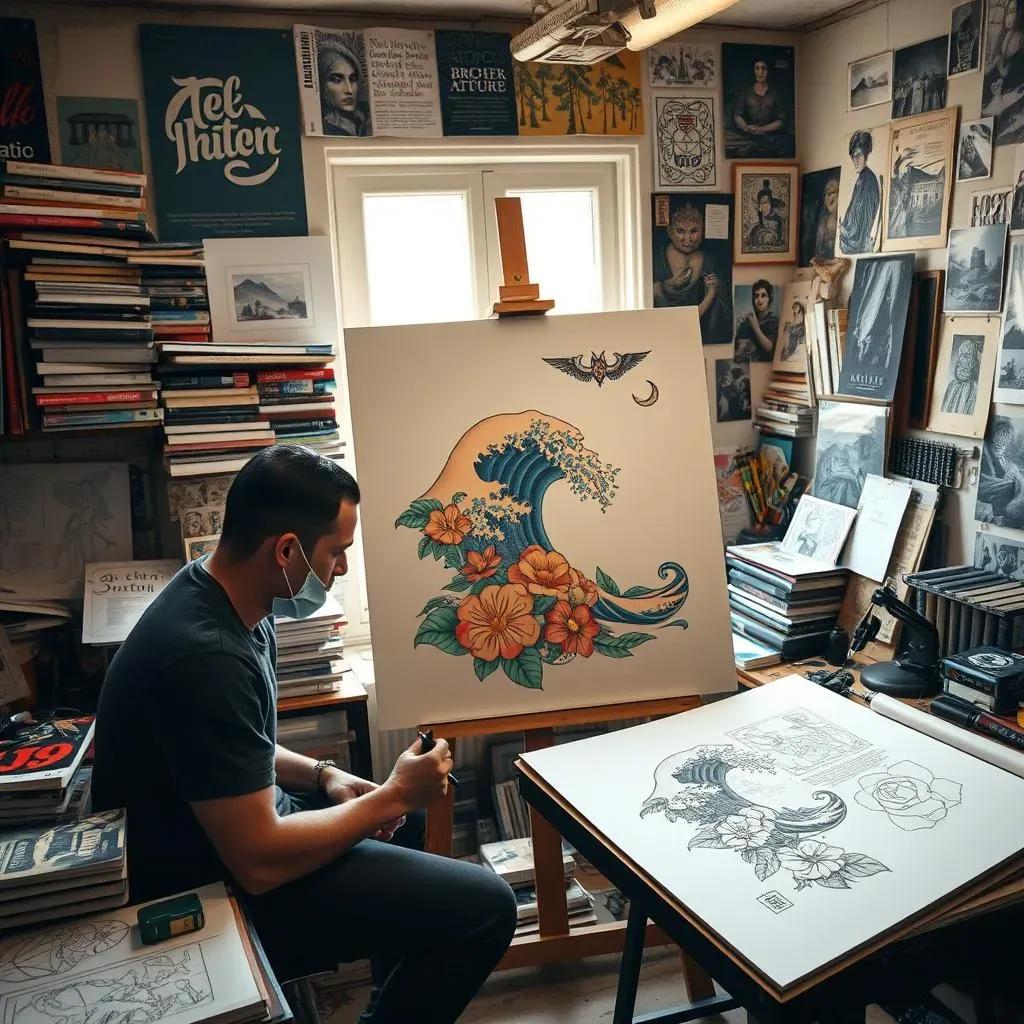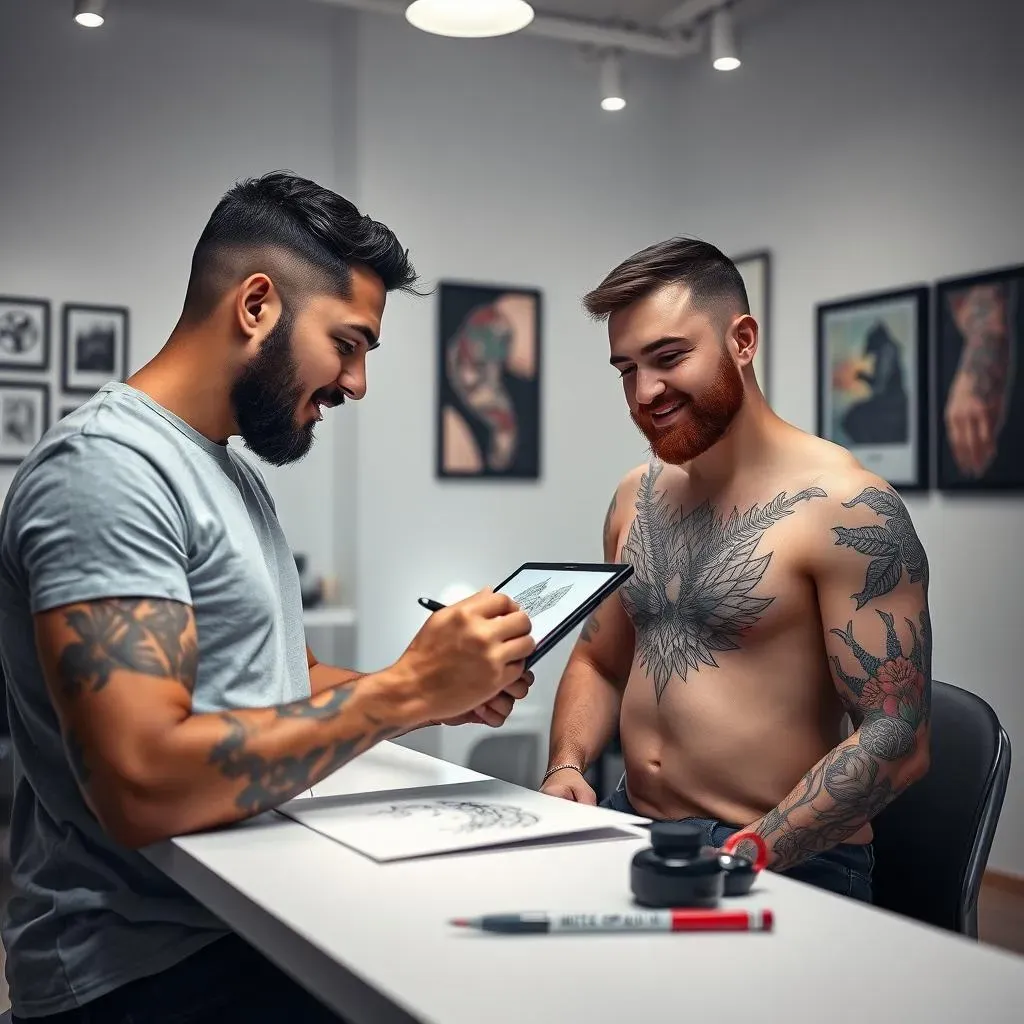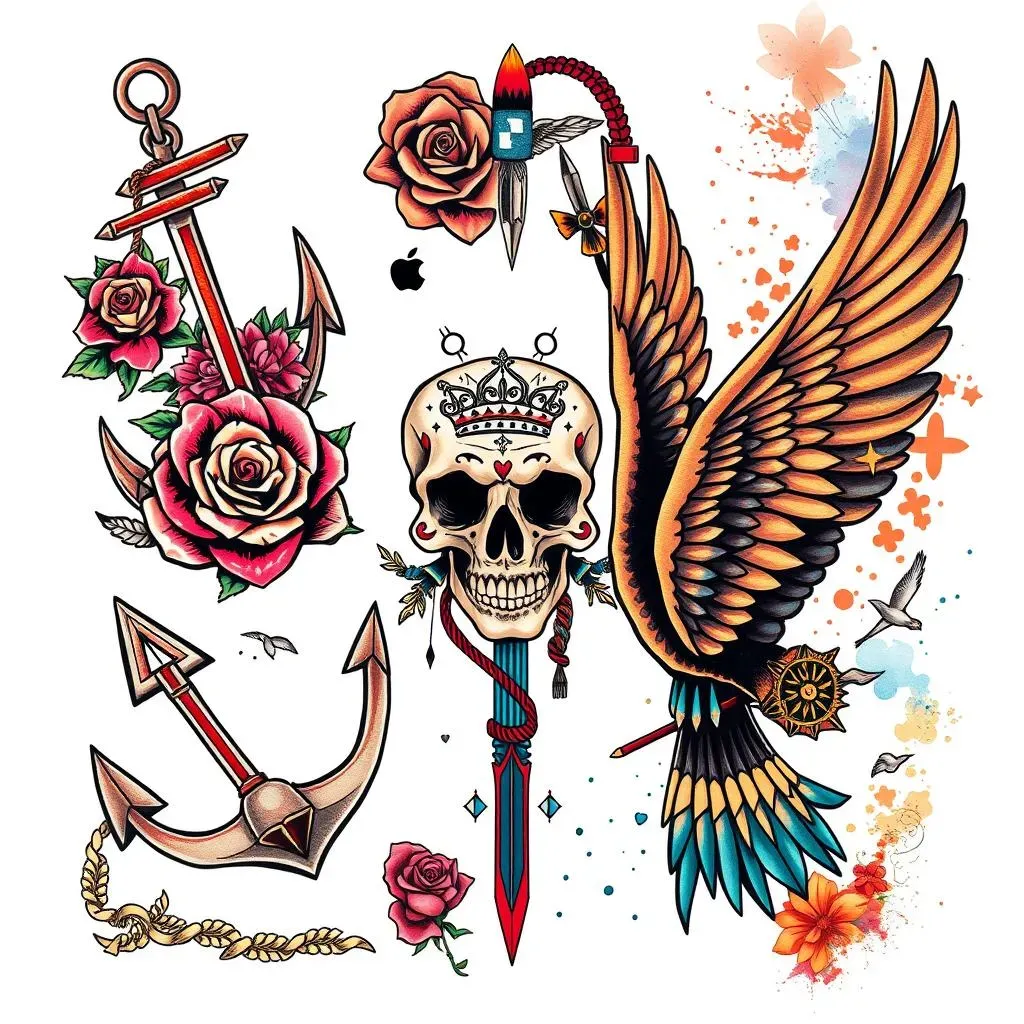Table of Contents
Ever wondered where tattoo artists conjure up those incredible designs? It's a question many ponder before taking the plunge into the world of ink. The answer is multifaceted, as tattoo artists draw inspiration from a wide array of sources. From the collaborative process of custom designs to the timeless appeal of classic flash art, the journey of a tattoo design is a fascinating one. We're diving deep into where do tattoo artists get their designs, exploring the creative processes, the influence of client input, and the role of artistic exploration. This article will guide you through the diverse avenues that artists explore to bring your tattoo visions to life. We'll examine how personal style, client collaboration, and a love for diverse art forms all contribute to the stunning artwork gracing skin around the world.
Inspiration Behind Tattoo Designs: A Tattoo Artist's Perspective
Inspiration Behind Tattoo Designs: A Tattoo Artist's Perspective
The World as Canvas
Where does inspiration strike? For many tattoo artists, it's everywhere! It could be the intricate details of a gothic cathedral, the vibrant colors in a street art mural, or the delicate lines of a botanical illustration. Artists often immerse themselves in diverse visual experiences. They visit museums, explore nature, and study different cultures. This constant exposure fuels their creativity and provides a rich source of ideas. Think of it like a painter studying light or a musician listening to different genres.
Beyond the visual, emotions and personal experiences play a crucial role. An artist might translate a feeling of loss into a poignant memorial tattoo. They could capture the joy of a new beginning in a vibrant, abstract design. These personal connections add depth and meaning to their work. It makes each tattoo a unique expression of both the artist's and the client's story.
Drawing from Art History and Pop Culture
Tattoo artists don't exist in a vacuum. They are influenced by the vast history of art and the ever-evolving landscape of pop culture. From classic Japanese woodblock prints to the bold lines of Art Deco, historical art movements provide a foundation for their designs. Many artists study these styles, adapting and reinterpreting them in their own unique ways. Imagine a modern tattoo infused with the elegance of Art Nouveau or the symbolism of ancient Egyptian art.
Pop culture also leaves its mark. Comic book characters, movie scenes, and musical icons often find their way into tattoo designs. These references resonate with clients who want to express their passions and affiliations. However, skilled artists don't just replicate; they transform these elements. They infuse them with their personal style and artistic vision, creating tattoos that are both meaningful and visually stunning.
Some popular sources for artists include:
- Museums and art galleries
- Nature and wildlife
- Books, comics, and graphic novels
- Music and film
- Historical art and artifacts
Custom Tattoo Designs: Working With Tattoo Artists to Create Unique Art
Custom Tattoo Designs: Working With Tattoo Artists to Create Unique Art
Your Vision, Their Expertise
Dreaming of a tattoo that's uniquely you? Custom designs are the way to go! This process involves collaborating closely with a tattoo artist to bring your specific vision to life. It starts with a consultation where you'll discuss your ideas, preferences, and any existing artwork or references you have. Think of it as a brainstorming session where you and the artist explore possibilities and refine your concept. The more detailed you are, the better the artist can understand your desires and translate them into a stunning design.
Don't be afraid to share your inspirations, whether it's a favorite painting, a meaningful symbol, or even just a feeling you want to capture. Remember, this is a collaborative process. Your input is invaluable in creating a tattoo that truly reflects your personality and story.
The Design Process: From Concept to Stencil
Once the artist understands your vision, they'll begin sketching and developing the design. This might involve multiple iterations, with the artist presenting you with different options and incorporating your feedback along the way. This stage is crucial for ensuring that the final design meets your expectations. Be open to the artist's suggestions and expertise; they can offer valuable insights into what will work best aesthetically and technically as a tattoo.
After you approve the final design, the artist will create a stencil. This stencil serves as a guide for the actual tattooing process, ensuring accuracy and precision. It's your last chance to make any minor adjustments before the ink hits your skin. Take your time to review the stencil carefully and make sure you're completely happy with it.
Here's a glimpse into what affects the pricing of a custom tattoo:
Factor | Description |
|---|---|
Complexity of Design | Intricate details and shading require more time and skill. |
Size and Placement | Larger tattoos and difficult-to-reach areas can increase the cost. |
Artist's Experience | More experienced and sought-after artists typically charge higher rates. |
Studio Fees | Some studios have additional fees for custom designs or consultations. |
Building a Relationship with Your Artist
Choosing the right artist for your custom tattoo is essential. Look for someone whose style resonates with you and who has experience creating the type of design you're envisioning. Browse their portfolio, read reviews, and schedule consultations with multiple artists before making your decision. A good artist will not only have the technical skills but also the ability to listen to your ideas, offer creative suggestions, and make you feel comfortable throughout the entire process.
Building a strong relationship with your tattoo artist can transform the experience from a simple transaction into a truly collaborative and meaningful artistic endeavor. Respect their expertise, communicate openly, and trust their judgment. Together, you can create a tattoo that you'll cherish for a lifetime. Before you pick your artist, ask yourself these questions:
- Does the artist's style align with your vision?
- Do they have experience with similar designs?
- Do you feel comfortable communicating with them?
Tattoo Flash and Beyond: Exploring the Sources of Tattoo Designs
Tattoo Flash and Beyond: Exploring the Sources of Tattoo Designs
The Enduring Appeal of Tattoo Flash
Tattoo flash: those sheets of pre-drawn designs you often see displayed in tattoo shops. It's a tradition that dates back to the early days of tattooing. Flash provides a readily available selection of classic images, from anchors and roses to skulls and eagles. While custom designs offer a unique, personalized touch, flash remains a popular choice for its affordability, speed, and timeless appeal. Many people love the nostalgia and simplicity of traditional flash designs.
However, flash is more than just a collection of old-school images. It's a foundation upon which many artists build their own styles. They can take a classic flash design and add their own flair, incorporating new techniques, colors, and details. Think of it as a remix of a classic song, where the original melody is still recognizable but with a fresh, modern twist.
Beyond the Walls: Expanding Design Horizons
While flash holds a special place in tattoo history, artists are constantly pushing the boundaries of design. They are looking beyond the traditional sources and experimenting with new styles, techniques, and subject matter. This includes incorporating elements of fine art, graphic design, and even digital art into their work. Imagine a tattoo that combines the bold lines of traditional flash with the intricate details of a Renaissance painting or the vibrant colors of a street art mural.
The rise of social media has also played a significant role in expanding design horizons. Artists can now easily share their work, connect with other creatives, and discover new trends from around the world. This constant exchange of ideas fosters innovation and allows artists to evolve their styles in exciting new directions. From geometric patterns to abstract watercolor effects, the possibilities for tattoo designs are truly endless.
Here's a table showcasing the evolution of tattoo design sources:
Era | Dominant Sources | Characteristics |
|---|---|---|
Early 20th Century | Traditional Flash, Nautical Themes | Simple lines, bold colors, limited subject matter |
Mid-20th Century | Biker Culture, Pin-up Art | More complex designs, incorporation of lettering |
Late 20th Century | Pop Culture, Fantasy Art | Greater diversity of styles and subject matter |
21st Century | Social Media, Fine Art, Digital Art | Experimentation with new techniques, global influences |
The Creative World of Tattoo Designs
So, where do tattoo artists get their designs? As we've explored, it's a rich blend of collaboration, inspiration, and artistic skill. Whether it's a custom piece born from a client's vision, a modern twist on traditional flash, or a spark ignited by the wider world of art, the source of a tattoo design is as unique as the individual wearing it. Understanding this creative journey not only enriches your appreciation for the art but also empowers you to collaborate effectively with your artist to create a truly meaningful and personal piece.